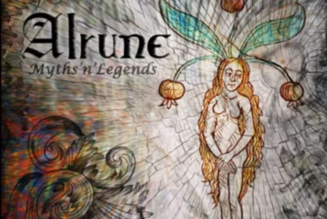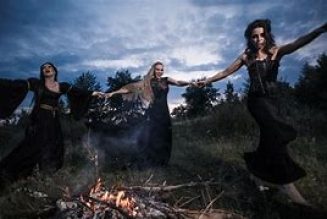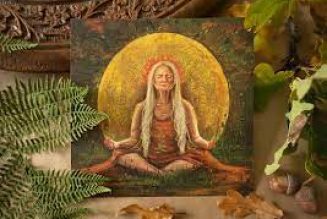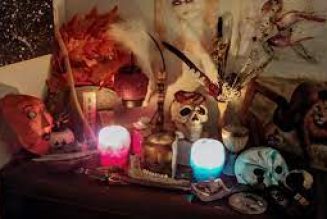A witch’s primary power (deity) is her or his Goddess.
She is known by many names, derived from many cultures, and all are aspects of the One.
The Moon in its waxing and waning, in its phases of full, new, and dark, is how witches dance with the birth, life, and death of their undertakings and their experiences.
Through ritual and observance, we align ourselves with our Goddess in Her ancient, but perennial, robes of the maiden, mother, and crone.
A priestess will “draw down the Moon,” a process of invocation, within herself to awaken and empower that within each of us that is essential of the Goddess.
She is also the Earth and is known by Her ancient names of Dana, Demeter, Isis, Inanna, Gaia, Brigid, Aphrodite, and Cerridwen, as well as the many others known by individuals and cultures alike.
She is a warrior-goddess, known by such names as Ishtar, Brigantia, Artemis, and Nemesis.
She is Goddess of the dark places, the Underworld, the unconscious, the Fates, and, especially, sorcery and Witchcraft.
She is Persephone, Hecate, Isis, Tiamat, Morgan le-fey, Cerridwr en, Diana, and Aradia
She is Goddess of the stars and space and sea and, therefore, She is Binah, Astarte, Mari, Asherah, and Arianrhod.
She is Goddess of wisdom, learning, and the arts. She is Sophia, Shekinah, Binah, Isis, and Vivienne.
She is the path of the incarnate priestess and witch who is Her representative in our world, and She dwells in seed within all that is female.
She is the sister, lover, mother, ally, and enemy to all that is male, a necessary interplay for the ways of life and death.
Her invocation within priestess and woman makes an inevitable difference to both self and society.
The reverence, passion, and honor given freely to Her by Her priests assures witches of easy alliances irrespective of sexual distinction.
There has been a historically trackable wave of imbalance since the ideology of one male,
omnipotent God became the politically expedient and suppressive tactic,
predominantly over the last sixteen thousand years, principally since the Council of Nicea in 325 C.E.,
when heresy became the “in” crime and the subsequent subjugation of women, culture, learning, freedom, wisdom, and honor was expedient.
The glory of conquest, greed, ownership, power for power’s sake, bigotry, and aggression became the accepted paradigm.
A semblance of rebalancing has begun in the late twentieth century, but there is much to redress.






















